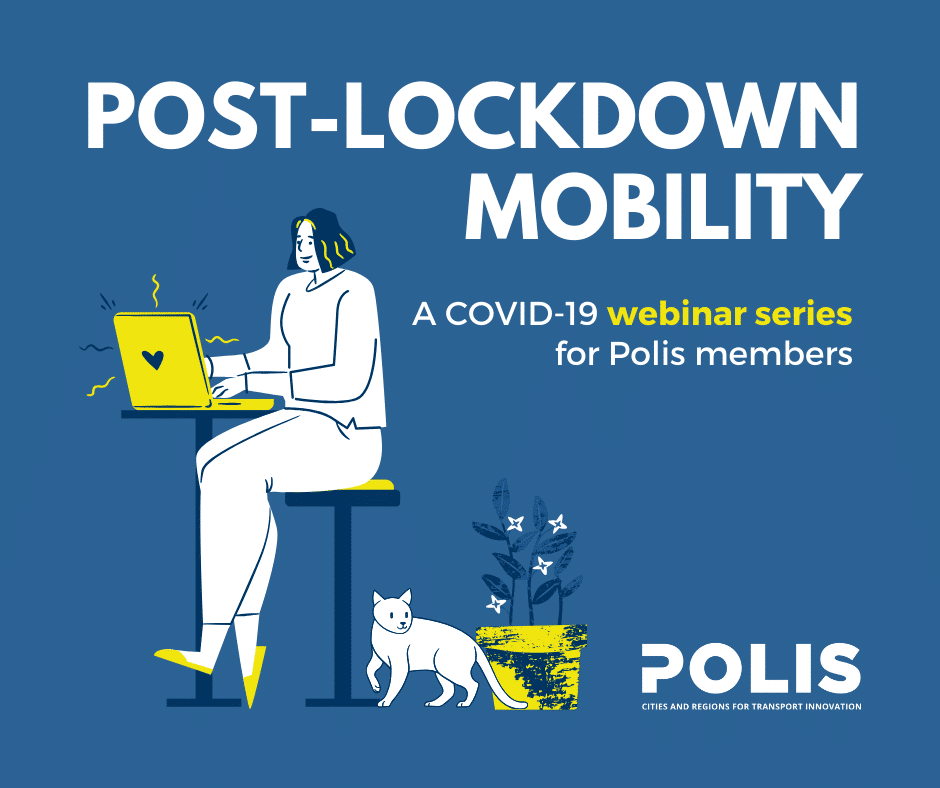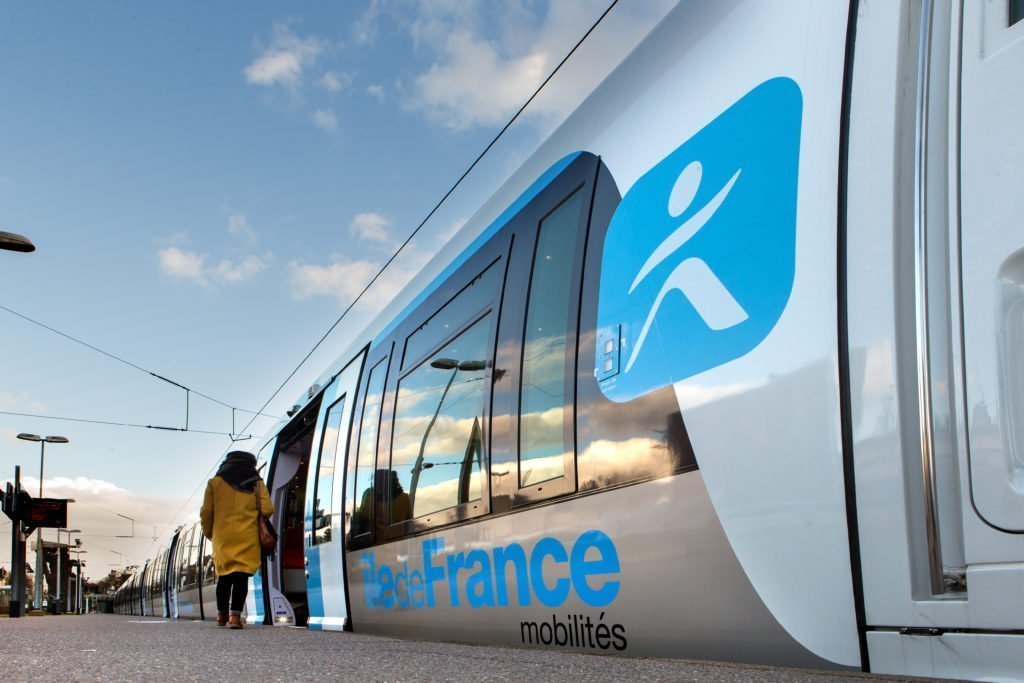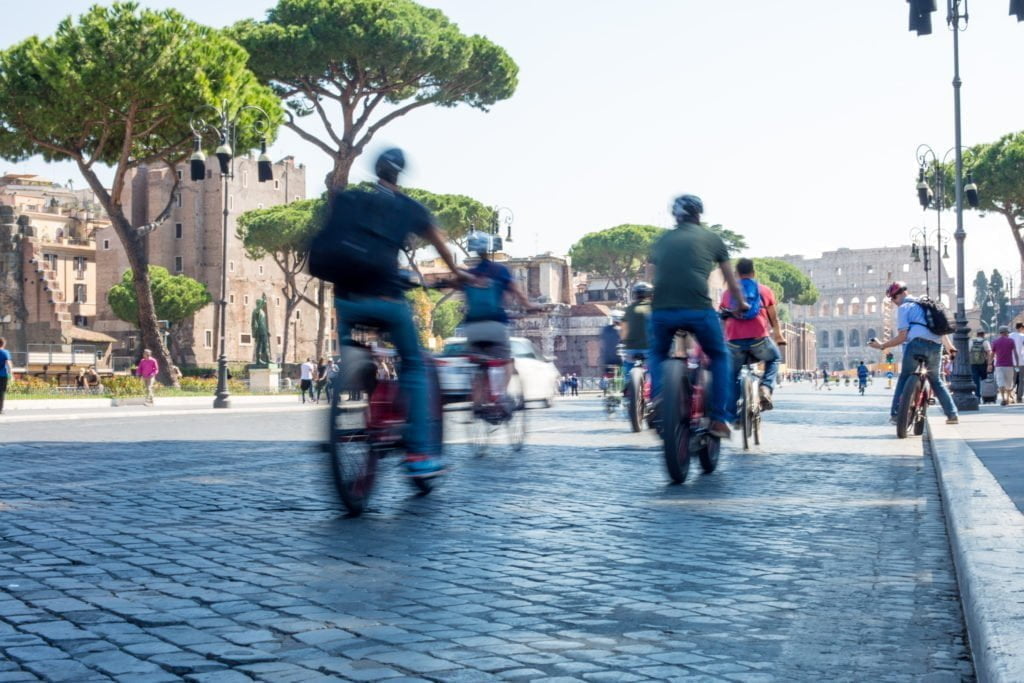Post-Lockdown Mobility webinar report: The post-lockdown strategies of Rome and Ile-de-France
The Post-Lockdown Mobility Strategy of Rome
Enrico Stefano, Chair of the Transport Committee at the City of Rome, set out Rome’s plans for mobility in the coming weeks and months. Italy has recently announced a gradual easing of lockdown measures and cities are now planning for recovery, including for transport.
Enrico began by setting out the pre-existing plans for transport in the Italian capital. Rome recently approved an ambitious, wide-ranging Sustainable Urban Mobility Plan (SUMP) which aims to transform mobility in the city. Amongst the plans are an extension of the public transport network, a pollution charge, the promotion of Mobility as a Service (MaaS), 80 ‘environmental islands’ (pedestrian zones with improved connectivity and accessibility) and over 300km of new cycle infrastructure.
Moving onto the challenges posed by COVID-19, Enrico highlighted the need to use this crisis as an opportunity for a paradigm shift in urban mobility, and to try to learn from this emergency situation to change how cities operate.
Phase One: The effects of lockdown
Enrico set out the impacts of lockdown measures on mobility in Rome and measures being taken to keep people safe during this time. During lockdown, public transport was operating reduced services and reduced operating times, with the metro finishing at 21:00. Taxi services were cut by a third in response to travel restrictions. The city also provided 100 shared cars to be used free of charge by health workers. The ‘limited traffic’ zone in the city has been temporarily suspended, as has on-street parking ticketing. Rome has also been closely monitoring traffic, with a range of data available on car traffic, public transport and walking. This data, publicly available on the Roma Mobilità website, shows that there was a 67% reduction in general traffic, 94% in metro stations, and around a 90% fall in pedestrian numbers in certain areas.
Enrico highlighted some key takeaways from mobility during lockdown, including:
• Home-working will be an important part of the future of work
• Air pollution has fallen significantly during this period
• Cycling has become more common during lockdown and holds huge potential for short journeys
• Public transport will face negative perceptions and concerns in the future
• Shared mobility has decreased, but the City is committed to trying to improve this going forward
Phase 2: Reopening the city
As the Italian capital begins to recover, mobility will slowly begin to grow once again. To keep people safe, a number of measures are being taken across different modes. On public transport, capacity per vehicle will be reduced to 50%, enabled by blocking off certain seats on each carriage. To deal with these social distancing rules, the supply of buses in the city is now being increased. As with many other cities, masks and gloves will be mandatory on public transport in Rome. In the first days  since the city eased lockdown measures, public transport has been operating at around 20% of pre-lockdown levels. This drop in passenger numbers is causing serious challenges for public transport, with reduced revenues and increased costs. With public transport supply reduced, a major challenge exists in avoiding an increase in car use in the city. To reduce this risk, the City of Rome is rolling out improvements to walking and cycling infrastructure. Over 150km of emergency bike lanes - based on the pre-existing plans in the SUMP - will be rolled out, with 40km completed in the coming months. Incentives are being introduced to encourage citizens to buy e-bikes to get around the city. A strong communication package, based on the ‘#ViaLibera’ campaign, will be rolled out to encourage walking and cycling in the city. Rome is also expanding shared mobility solutions to suburbs, as well as launching a shared scooter system later this month. Travel demand will continue to be below normal, particularly at peak hours, due to continued home-working for many people. Whilst on-street parking payments have returned, the ‘limited traffic’ zone will remain suspended.
since the city eased lockdown measures, public transport has been operating at around 20% of pre-lockdown levels. This drop in passenger numbers is causing serious challenges for public transport, with reduced revenues and increased costs. With public transport supply reduced, a major challenge exists in avoiding an increase in car use in the city. To reduce this risk, the City of Rome is rolling out improvements to walking and cycling infrastructure. Over 150km of emergency bike lanes - based on the pre-existing plans in the SUMP - will be rolled out, with 40km completed in the coming months. Incentives are being introduced to encourage citizens to buy e-bikes to get around the city. A strong communication package, based on the ‘#ViaLibera’ campaign, will be rolled out to encourage walking and cycling in the city. Rome is also expanding shared mobility solutions to suburbs, as well as launching a shared scooter system later this month. Travel demand will continue to be below normal, particularly at peak hours, due to continued home-working for many people. Whilst on-street parking payments have returned, the ‘limited traffic’ zone will remain suspended.
Enrico closed by highlighting some key lessons for the future of mobility, including:
• Monitoring and tracking traffic data
• The value of home-working and digitalisation
• Better regulation of urban mobility
• The need to promote active modes of travel
The Post-Lockdown Mobility Strategy of Ile-de-France
Emil Brunnquell, Policy Officer at Ile-de-France Mobilités, and Françoise Guaspare, Senior Advisor at Ile-de-France Europe, provided an overview of the mobility response to COVID-19 in the region.
Whilst Ile-de-France’s public transport strategy for post-lockdown has yet to be finalised, measures are being taken to support  public transport users. To compensate for massively reduced services, holders of monthly public transport travel cards have been offered a 100 Euro refund. Public transport capacity across the region has been reduced to cater for two million passengers, with supply on buses and metros reduced to around a third of normal capacity. Two million masks have been distributed to public transport passengers. A new charter on public transport and home-working has been signed by the region, local authorities, the state, employers and unions to encourage home-working and changed travel behaviour during this time. Françoise and Emil also highlighted the significant financial problems facing public transport, with Ile-de-France Mobilités currently losing around half a billion Euros every month. Support is being sought from the national government to support Ile-de-France Mobilités during this challenging time.
public transport users. To compensate for massively reduced services, holders of monthly public transport travel cards have been offered a 100 Euro refund. Public transport capacity across the region has been reduced to cater for two million passengers, with supply on buses and metros reduced to around a third of normal capacity. Two million masks have been distributed to public transport passengers. A new charter on public transport and home-working has been signed by the region, local authorities, the state, employers and unions to encourage home-working and changed travel behaviour during this time. Françoise and Emil also highlighted the significant financial problems facing public transport, with Ile-de-France Mobilités currently losing around half a billion Euros every month. Support is being sought from the national government to support Ile-de-France Mobilités during this challenging time.
Ile-de-France is taking a range of measures to support cycling in the coming months. Before COVID-19, the region was aiming to have two million trips per day taken by bike by 2021. To do so, Ile-de-France has committed to making improvements to infrastructure and cycle parking, as well as providing better connectivity within the network. An ambitious plan for 650km of cycle paths across the region has been brought forward as a result of COVID-19, with 250km of temporary cycle paths being implemented in the near future. These temporary lanes will be used to test and trial the network and predict people’s needs and behaviours. The new cycle network (‘RER-V’) will aim to deliver high-quality, safe, efficient, comfortable and continuous cycle routes across the region.
To accompany this, Ile-de-France’s ‘Veligo’ e-bike rental scheme (considered the largest in the world) is providing 10,000 e-bikes for people to hire across the region. This will eventually increase to 20,000. To support sustainable mobility post-lockdown, one month of free use of e-bikes is being offered to all subscribers, with 200 bikes also made available free of charge to health workers. Ile-de-France is covering 50% of the costs for the purchase of e-bikes, which will soon be extended to all bikes. Whilst plans to expand the use of e-bikes were already in place, the situation with COVID-19 has brought them forward.
Members can access the recording of the webinars in the members’ area on the POLIS website. For the full list of webinars, please see our website.


